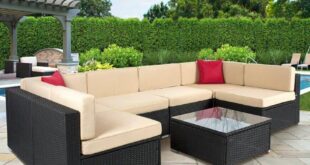With its clean lines and extremely cool vibe, mid-century modern decor has been popular for about a decade. The comfortable and stylish designs suit today’s more casual lifestyle and open floor plans.
What is mid-century modern style? It’s really indicative of developments from the mid-20th century – mainly after World War II – in architecture, furniture, materials and technology that became popular after the war ended. Most sources generally accept that the heyday was between 1945 and 1969. Mid-century modern has many roots in German Bauhaus style. Thanks to migration from Europe after World War II, designers brought this style of interior design to the United States, where it became, and still is, extremely popular.
The style remains popular to this day as it fits perfectly with today’s modern, contemporary and eclectic home decor styles. A connection to Scandinavian minimalism and the incorporation of natural materials is a key feature that drives its followers.
Characteristic properties
clean lines
The understated and eclectic look of mid-century modern is based on clean lines, curves and smooth surfaces. It’s more about geometric minimalism, and excessive decor is nowhere to be found in mid-century modern design. The design philosophy is about focusing on the basic elements and the function of the piece.
materials
Plywood, plastic, metal, glass, vinyl, plexiglass, and lucite appeared in furniture from this period. Wood details are still a unifying element of mid-century modern design derived from Scandinavian influence. Finished and untreated wood is used for decorative details such as doors, knobs, ceilings and storage.
Colours
Clean lines and simple shapes leave plenty of room for color in the mid-century modern design known for its bold pops of color. Don’t be afraid to rock a variety of bold hues here and there, including upholstery, wallpaper, light floors, carpets and other things.
pattern and texture
Textures are also important in mid-century modern design, as in any space that is modern and full of clean lines and minimalist shapes. Elements like shaggy carpets, rough stone fireplaces, smooth glass tables, sleek ceramics, and textured upholstery make for a more interesting space. Don’t forget about abstract paintings and throw pillows to spice up the look.
 decordip Interior Design Ideas
decordip Interior Design Ideas




